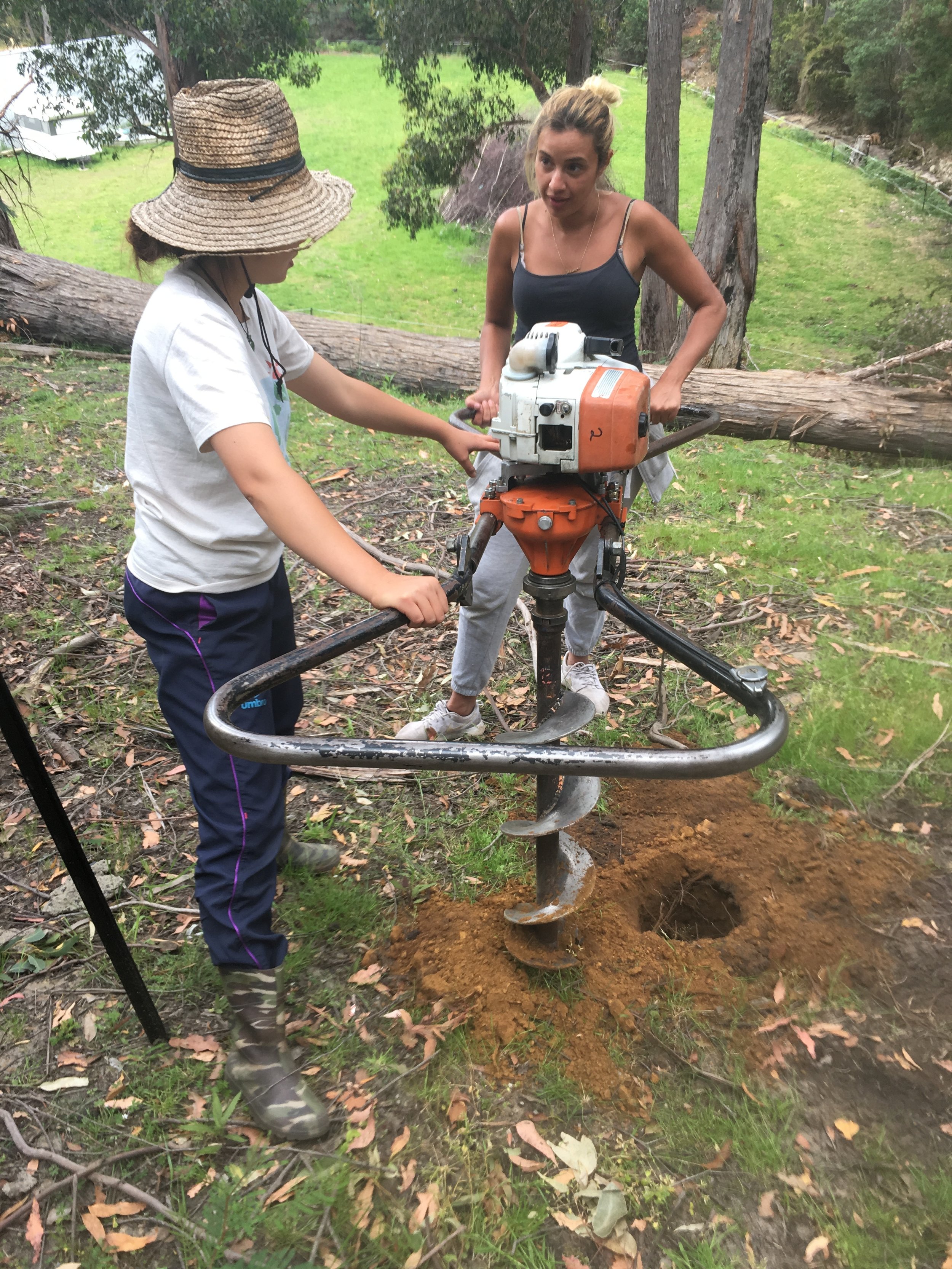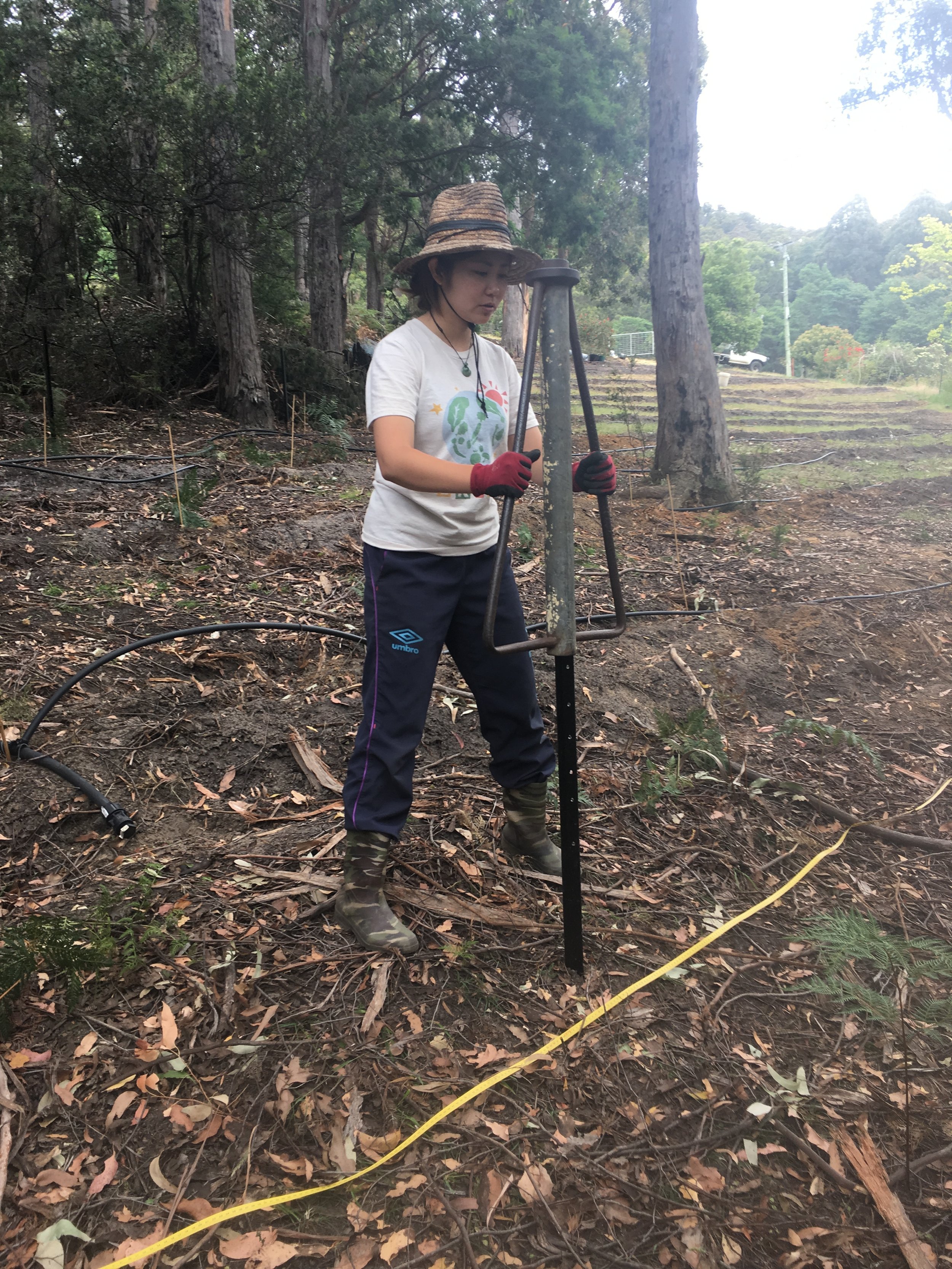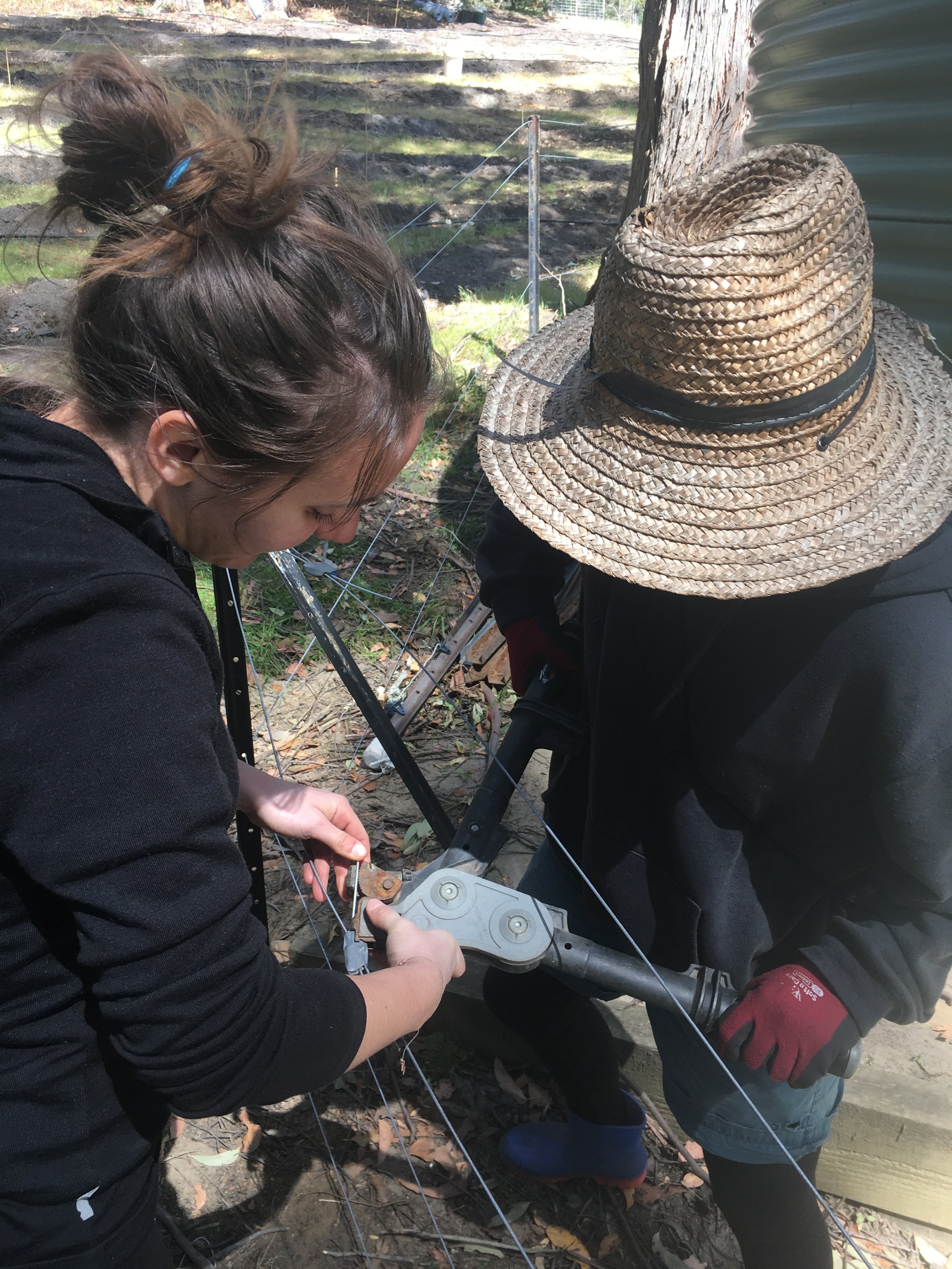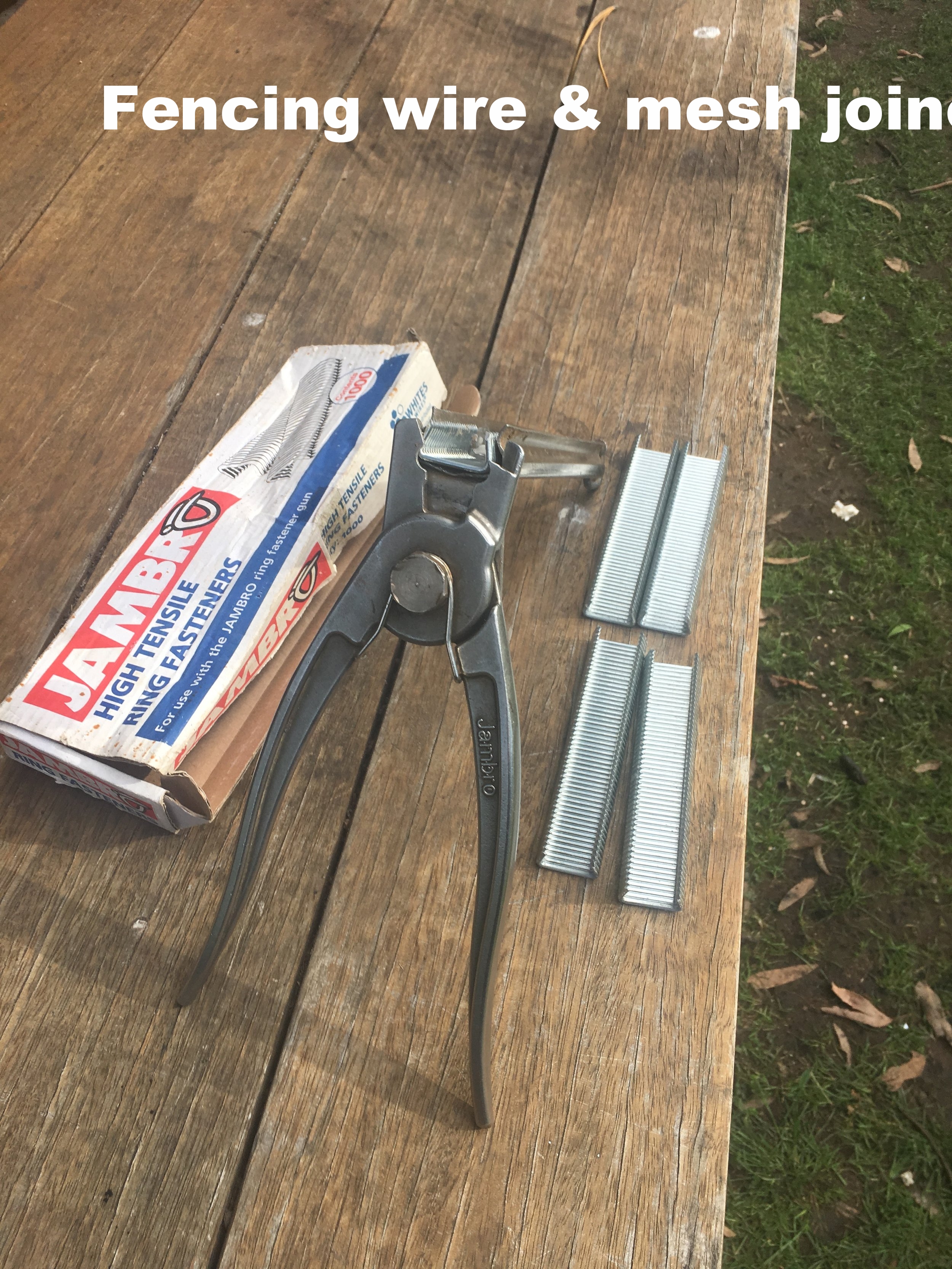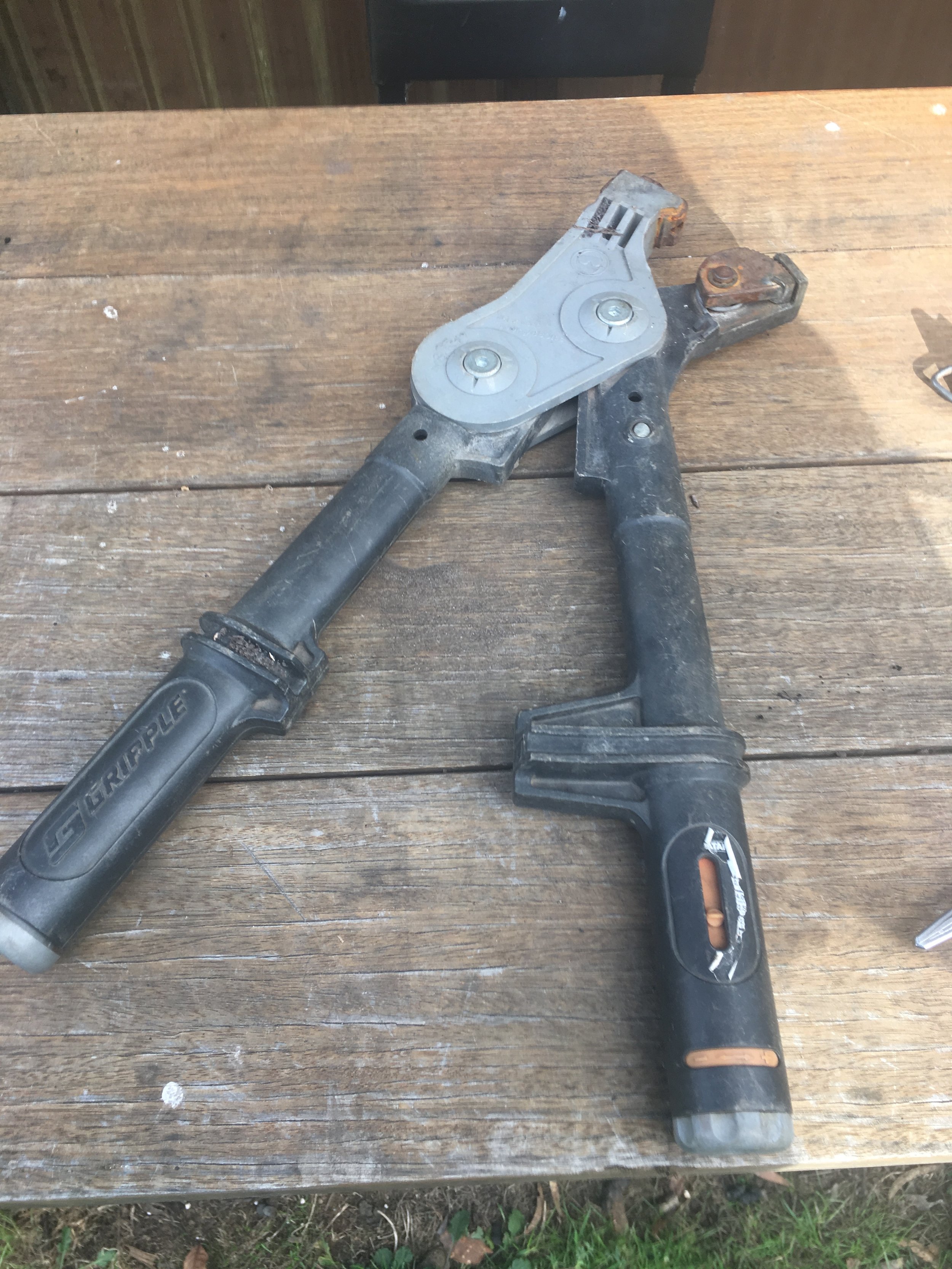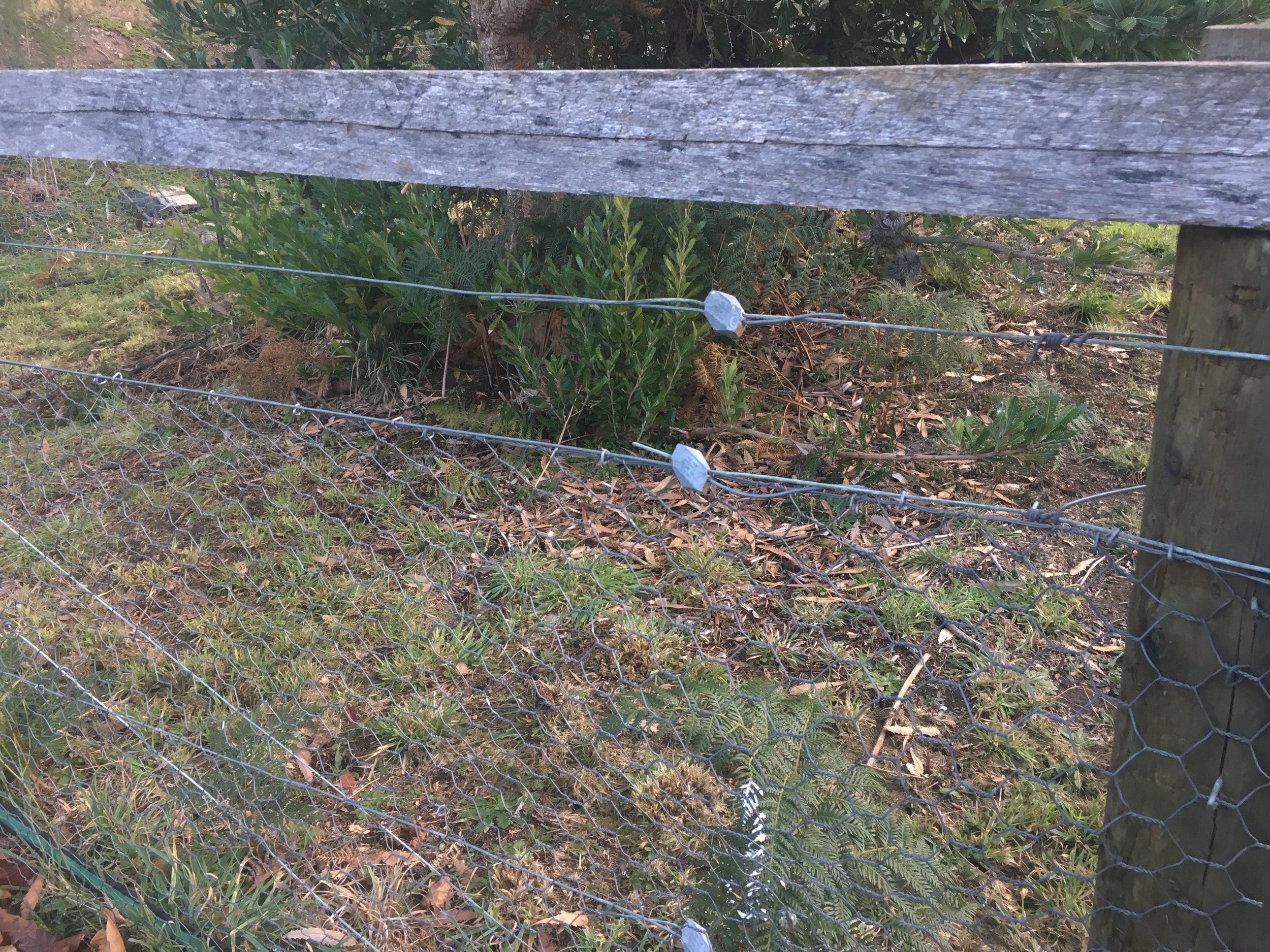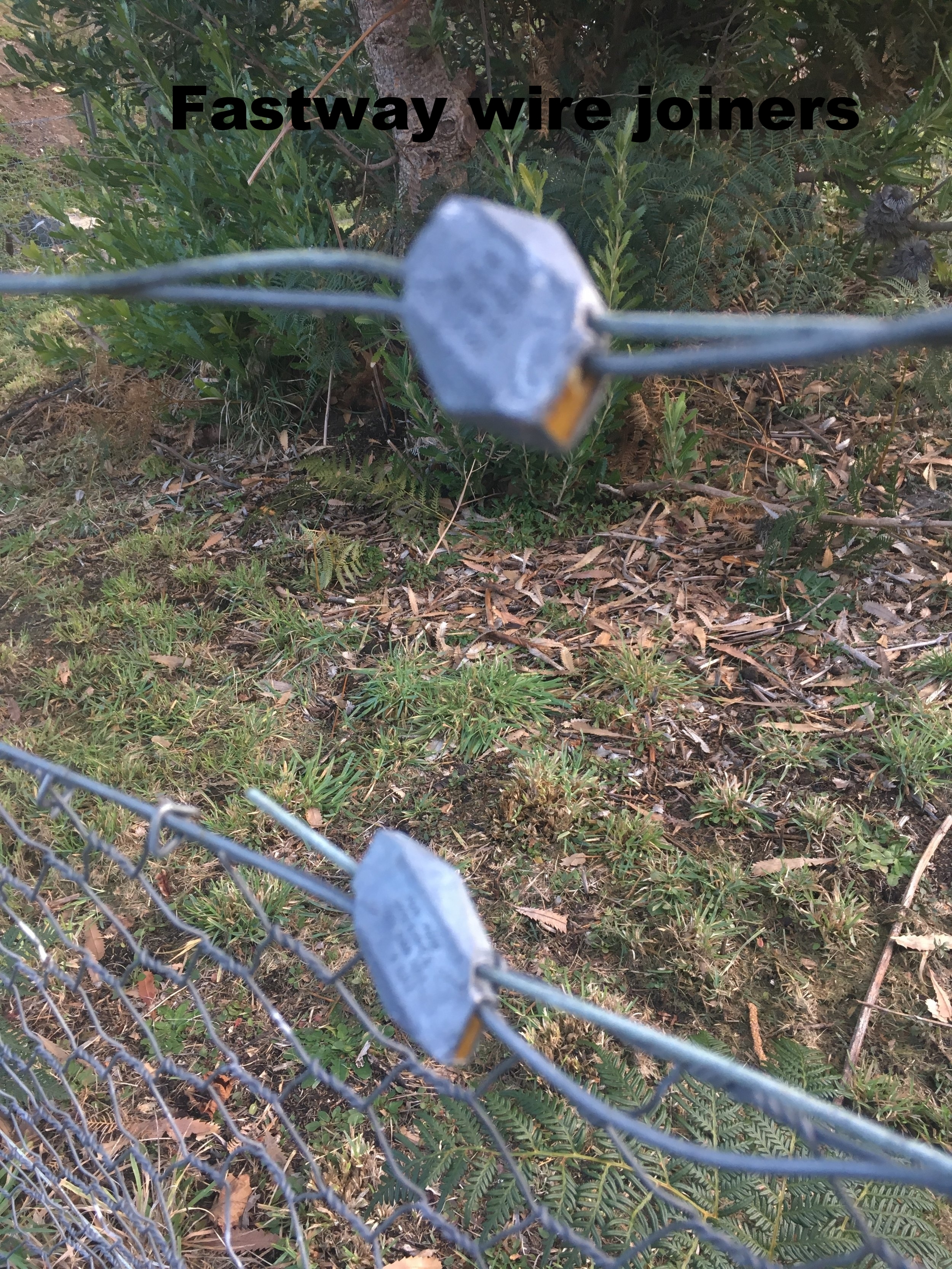Fencing.
Our fencing experience.
Most of our land is earmarked for wildlife, we boundary fence with stock fencing to protect the native integrity from neighbouring threats eg, stock, thereby allowing free range for all native wildlife except for food production areas.
Food production zones.
For these areas we must fence with a high quality galvanised steel rabbit netting. With a 40mm heavy gauge hexagonal design, snakes (our friends) can still get through but small mammals can’t. We also clad all our gates with this.
The fence skeleton.
The supporting frame of the fence is made of a few components;
3 to 4 metre spacings of either 1.65 metre or 1.8 metre star pickets, depending on soil firmness or hilliness.
4 strands of wire. One at the base (right at ground level, one at approximately 450mm, one at 900mm and one at 1030mm. The first three are for cladding the rabbit netting to, and the last (top one) is for a number of reasons,
- To save money from unnecessarily buying extra wide rabbit netting not needed at that height.
- This separate top wire allows people to climb over without damaging the rabbit netting by folding it down under pressure, and doesn’t have the sharp fencing staples for when you use the wire to hold for support.
- To stop wallabies jumping over at that height (1030mm)
As we are in southern Tasmania the largest native animal we need fence out is the Bennetts wallaby, standing about 70cm tall, generally they wont jump higher than their height. The main animals we design our fencing for are rabbits, possums, kids and dogs, (not in any specific order.)
Pest management.
Rabbit flaps, Essential design, when we don’t use them the rabbits get in,with them the rabbits stay out!
By laying the excess rabbit netting on the ground they are unable or unwilling to dig under the sharp wire net. We but either 1200mm high netting or 1050mm, because we only need to cover 900mm height the remaining 150mm or 300mm we use as a flap on the ground. This would generally face outward, in some cases it is practical to have it facing inward
Possum proofing, flaps and features.
In our design we don’t use possum flaps but they do work. I have seen many smaller vegie patches in Tassie that use a smaller gauge avery style netting.
This has many advantages (and some disadvantages) such as; keeping rats out, almost impossible as they end up in there from an open gate and you wont know they are in there ;extra wide, you can have a rabbit flap at the base, 3 supporting wires and enough left over for a possum flap at the top. The flap consists of the metal netting folding out loosely although reinforced with perpendicular wire strands to hold it’s tubular wave shape. The wave shape should be about 400- 450 mm of flap above the top wire strand.
We also clad wooden corner posts with old sheet metal (old roofing iron or old metal sign cut up). This puts possums off climbing corner posts, they don’t particularly like climbing the rabbit net.
Possum behavior. As a general rule, possums wont come into your garden unless there is not enough natural food freely available or unless they have a taste for something in particular. As food becomes more scarce, in winter often mothers and young find our patch an opportune, safe feeding environment. They love heavy feeding winter brassicas like broccolis or caulies and don’t seem to want the other stuff. (They also like silverbeets.) When this happens and or before, we set possum traps with sweet apples, works every time. We then relocate them. I wonder if leaving them exposed in the cage for half a day puts them off coming back or just stresses them out.
Corner and strainer posts.
We avoid “Coppers logs” or CCA (copper, chromium, arsenate) treated pine, once you buy it, it’s there in our environment for a very long time whether you get a good twenty years or more out of it the result is still the same, the CCA toxic heavy metals remain in our system interacting at a biological level. If it is burned or landfilled the result is the same, there is only one way to avoid this outcome, don’t buy it. There are now ‘low tox CCA’ style posts…same deal.. So what are the alternatives.
Locally milled posts. We have often sourced locally milled hardwood, Stringy bark, Regnans etc. alternatively we have milled our own with a Lucas mill. Generally measuring 100mm x 125mm x 2.1 – 2.4 metres. Avoid using sap wood, try to choose timber more from the internal part of the trunk (not so easy). The area of the post that is susceptible to rot is at ground level to 300mm below. This is the biologically active part of the soil containing cellulose digesting fungi! There are two methods I know of to dramatically slow this process.
1; Charring the outer layer. You can slightly burn the area in question either over a fire or with a torch, this will draw out aromatic resins and harden them off making a natural barrier to soil borne microbes that want to feed on your post.
2; Painting the area to be buried with “Diggers Eco In-Ground Timber Protecta” for organic farms. This ACO registered farm input is a nontoxic creasote alternative. Available from major hardware stores Australia wide and costs around $50 for 4litres.
Split log posts.
A long lasting local solution is split posts from on farm sourced green hardwood logs about 250mm- 300mm diameter, split three ways using wedges and the back of a hatchet or axe, then immediately striping off the bark.
Split three ways. two sides of the three sided post are essentially heart wood and therefore is quite resilient and lasts decades, you could try scorching a above for even stronger results.
Our experience, on removal of old (50 – 70year old) hardwood split log posts is remarkable, with very little decay the subterranean portion of the post remains in a hardened state as we have recycled them for our new fences. See header photo
Star pickets, rammers and pullers.
We use ‘lite’ starpickets for the main part of our fences as they are not for cattle fencing purposes, keeping our costs lower, we mainly use 1600mm pickets unless the ground is too soft or for anchoring a low point, if so we then use 1800mm pickets, we also use these for minor corners. We try to space the pickets between 3.2 - 4.5 metres depending on terrain.
Our preferred star picketrammer is an older triangular design with a weighted top, this allows use as a hammer when needing to attempt angled corner stays.
Equipment we use.
For pulling star pickets back out, which we do regularly as will you, you will need a manual device that is user friendly, strong and is no fuss. The ONLY simple time proven device I have found is the ‘Jackjaw Post puller’ although more expensive than similar devices at $270 this device will allow you to get on with the job of fencing and let you see the light at the end of the tunnel. As it is fairly indestructible the Jackjaw will retain a great deal of the original price if resold.
Triple Galvanised wire, 1.5km, Whites Australia, this is the most cost effective wire we have found, and can be cut up for weed mat clips. available in Tasmania Hollander Imports.
Wire tensioner and connectors, Gripple pliers are long lasting and can be used with the cheaper, quality gripple alternative ‘Fastlink’. Available Hollander Imports (Tas), soon to be available from us here at Longley Organic Farm.
Whites 1200mm x50m Rabbit netting. Allows a 300mm base flap to stop rabbits. Very high quality Whites Australia, Tasmania- Hollander Imports
Fencing staples and gun for attaching rabbit netting to wires. Whites Jambro fencing staples and gun. Very strong and long lasting Staples cost effective. Available from Whites Australia, Tasmania- Hollander Imports, soon to be available from Longley Organic Farm

